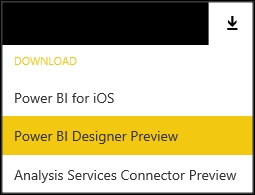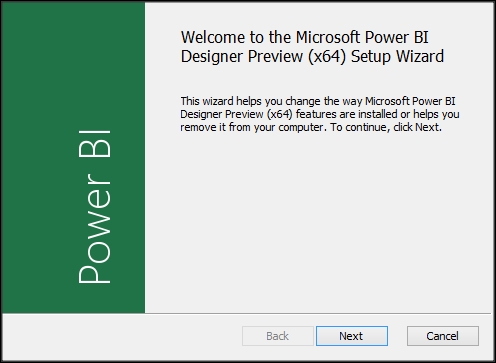Power BI along with PowerQuery, PowerMap, and PowerView—used to be only included as a Microsoft Excel 2013 add-in. Although these add-ins are still available, there is now a new tool dedicated to Power BI report and dashboard authoring called Power BI Designer.
The Power BI Designer offers a lot of the same functionalities as its predecessor in Excel add-in, but without the Excel requirements. The benefit of using the Power BI Designer is that it is a standalone program that can provide self-service data connectivity, transformation, modeling, visualizations, and collaboration. The Power BI Designer is a standalone 64-bit application that can be deployed together with a 32-bit version of Office, using the same functionality that was used to create interactive charts, maps, graphs, and data transformations without the requirement of Microsoft Excel 2013.
Here is how you install it:
Now that you have Power BI Designer installed and open, you can begin leveraging the tool for dashboard, report creation, and data transformation. Power BI Designer help videos are available at startup or by navigating to File -> Getting Started in the main menu.
The Power BI Designer toolset is based on two views:
Query: This connects, shapes, and combines data to data models
Report: This builds reports from the queried information to shareable reports

Power BI Designer preview
Once you build your dashboards and reports with Power BI Designer, you will want to save your work. Using Power BI Designer, you can now save it as a Power BI Designer file. Later in Chapter 7, Deploy and Present Reports to the Power BI Site, you will learn how to save the designer file and upload it to the Power BI site.






